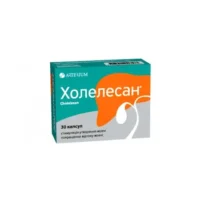Description
Zolopent (pantoprazole) Coated Tablets 40 mg. №14
Ingredients
- Each tablet contains 40 mg of pantoprazole.
Dosage
- The recommended dosage is one tablet daily, swallowed whole with water, preferably before a meal.
Indications
- Zolopent (pantoprazole) is indicated for the treatment of gastroesophageal reflux disease (GERD), ulcers, and Zollinger-Ellison syndrome.
Contraindications
- Do not use Zolopent if you are allergic to pantoprazole or any other ingredients in the tablets.
Directions
- Follow the instructions provided by your healthcare provider. Do not crush or chew the tablets.
Scientific Evidence
Pantoprazole, the active ingredient in Zolopent, works by irreversibly inhibiting the proton pump in the stomach’s parietal cells, thereby reducing acid secretion. This mechanism of action makes it highly effective in treating acid-related disorders.
Clinical trials have demonstrated the efficacy of pantoprazole in healing and symptom relief of GERD and peptic ulcers. A study published in the American Journal of Gastroenterology showed that pantoprazole was superior to other proton pump inhibitors in maintaining remission in patients with erosive esophagitis.
Additional Information
Zolopent (pantoprazole) coated tablets provide long-lasting relief from acid-related conditions, promoting healing and symptom improvement. It is well-tolerated by most patients and has a low risk of drug interactions.
Before using Zolopent, inform your healthcare provider about any existing medical conditions or medications you are taking to avoid potential complications.





